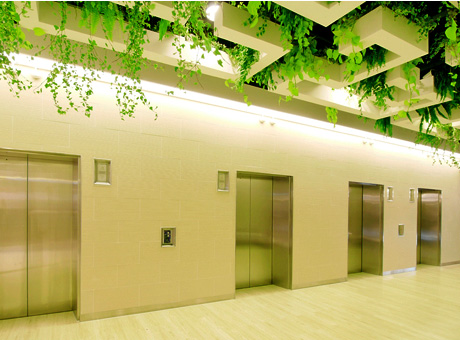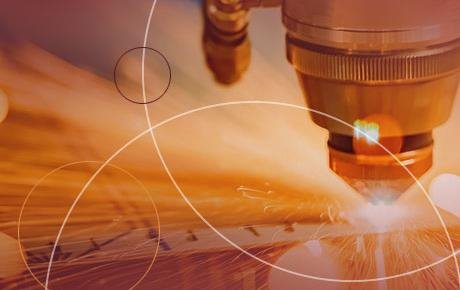What Makes an Elevator Green?
What Makes an Elevator Green?


In the beginning there was Archimedes, who in 236 B.C.E. hooked his famous pulleys to the top of a big wooden box and began to pull. Eureka, the elevator was born. Made of locally sourced, sustainably produced materials, his person-powered off-the-grid invention is the distant ancestor of a new crop of eco-friendly elevators now courting the growing green-building market.
Some estimates project that buildings consume about 40% of the world's energy, and elevators account for between 2% and 10% of a building's energy use. The leading elevator manufacturers are rising up to get those numbers down.
What makes an elevator green? Energy consumption is key, but that's just a start. The materials, processes, and technologies that go into the manufacture of an elevator system also count. So too do the choices of interior paints, flooring, control panels, lighting, and HVAC systems. All of these elements can contribute points to a building's overall score for LEED accreditation by the U.S. Green Building Council. Here is a snapshot of how the major elevator makers are addressing these design elements.
Machine-Room-Less Technology
Introduced in the mid-1990s, machine-room-less (MRL) technology was one of the biggest advances in elevator design since they went electric a century before. Miniaturization has made it feasible to house the MRL machinery right in the elevator shaft rather than in a costly rooftop machine room. Incorporating a gearless traction design, MRL elevators in some cases can use up to 80% less energy than hydraulic lifts, without the expense and environmental headaches of oil-filled underground hydraulic cylinders.
KONE, Inc. (Moline, IL) introduced the first MRL elevator and places so much stock in the technology that the company discontinued manufacturing hydraulic elevators altogether. Its EcoSpace MRL elevator design incorporates a low-friction, gearless hoisting apparatus that prevents wear and reduces energy consumption by half compared to a geared system.
A machine-room-less elevator system by Otis (Farmington, CT), the Gen2 system, is scalable to save energy in a range of building heights. It too aspires to 50% energy reduction over earlier systems, with the added green bonus of lubrication-free operation thanks to polyurethane coated-steel belts, gearless machine, and roller guides.
Regenerative Drives
Green elevators don't just stop with reducing energy consumption — some of them give back much of what they take. Regenerative drive systems recover energy that would normally be dissipated as heat and put it back into the building's electrical system. Not only does the technology produce power for lighting and air conditioning, it also saves money by reducing the need for machine-room cooling. Regenerative drives reduce power consumption during peak periods, contributing to a building's overall operational bottom line. Most of the major players offer this technology.
Control Features
It's a matter of physics: elevators without very many passengers aboard require more energy due to the weight differential between the elevator and its counterweight. A major goal of green elevator technology is to cut down on these light loads through precision traffic control, management of interior lighting and other energy-burning factors.
Novel computerized systems help reduce the number of light-load trips while ensuring that there are enough elevators in operation to provide fast service. Schindler's (Morristown, NJ) systems offer an Energy Control Option (ECO) mode that switches unused elevators into standby. If waiting times become too long, the system will activate additional cabs to meet the need. ThyssenKrupp (Memphis, TN) says its Destination Dispatch system improves handling capacity by 15-30%. The system monitors and controls the amount of current delivered to the motor, ensuring the correct level to provide to keep the motor running at full speed. As a result, the motor is protected from peak over-currents, potential overload and sudden power surges.
Outside the box
Green elevator technology isn't limited to what's in the shaft. Companies include external factors in their sustainability bona fides that contribute to a lower overall carbon footprint across the elevator's life cycle while reflecting their green corporate values. Customers considering an elevator vendor can evaluate the energy-efficiency of its manufacturing facilities, service fleet management practices, remote monitoring technologies for early diagnosis of mechanical problems, and other support systems.
Elevators will never again be as eco-neutral as it was back in Archimedes' day, but it's clear that green elevator technology is on the way up.
Michael MacRae is an independent writer.
Green elevators don’t just stop with reducing energy consumption – some of them give back much of what they take.



